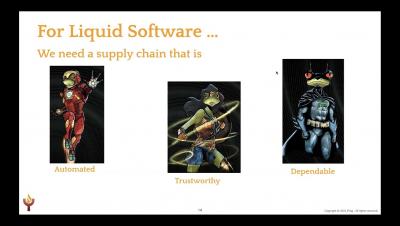Security | Threat Detection | Cyberattacks | DevSecOps | Compliance
Security
#DevOpsSpeakeasy at #KubeCon EU 2022 with Nuno Do Carmo
Stranger Danger: Your JavaScript Attack Surface Just Got Bigger
Security Insights on the Low-Code / No-Code Attack Vector
The August 4th compromise of Twilio via a targeted smishing attack has been a topic of wide concern and discussion on social media. My first thoughts on hearing of the attack were to virtually “pat myself down” with regard to exposure risk. Kind of like that feeling when you’re not sure if your car keys or wallet are in your pocket a few blocks after walking away from your parking space. Is my company affected by the breach? Did we receive a notification email from them?
geeks+gurus: SOAR - No-code vs. zero-dev security automation
How Hospital Hacks Happen: The Nation State Attack
Working Abroad as a Cybersecurity Professional: What You Need to Know
The world is becoming a smaller place. The prospect of working in another country becomes increasingly realistic and even promising as businesses migrate toward the cloud and collaborate more closely with international partners. Amid this shift, cybersecurity professionals may wonder if they can work abroad. Cybersecurity is a worldwide concern, creating plenty of global opportunities for security professionals.
How Penetration Testing can help prevent Ransomware Attacks
It is hard to believe, but ransomware is more than three decades old. While many would think that the ransomware mayhem started with the WannaCry attack of 2017, that is simply the most publicized example. Since then, dozens of ransomware strains have been utilized in a variety of cyberattacks.
3 Ways Software Engineers Can Save Time and Eliminate DevOps Waste
As software engineers, we are incredibly busy. We’re designing new features, writing tests and implementing code, debugging, opening pull requests, and performing code reviews. That’s not to mention all of the DevOps stuff that our teams have us doing nowadays, too. Oh yes, and then there are stand-ups, check-ins, one-on-ones, and all-hands. The thing is: you don’t have time to waste. If there is wasted time in your workweek, it’s worth looking into how to recapture that time.
Top Cyber Security Websites of 2022
These security websites will help your team up-to-date on the latest cybersecurity scams. It is important to keep up with the latest cyber security threats and how to protect your company from them. With so many websites and articles out there on the topic, it can be difficult to know which ones are worth reading.










